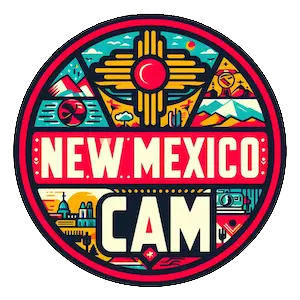Bobcat Pass, NM Weather Cams
Bobcat Pass Cam
The Wild and Rugged History of Bobcat Pass
Bobcat Pass, NM Weather Cams. In the heart of the Sacramento Mountains of southern New Mexico, an ancient trail winds its way through a narrow defile known as Bobcat Pass. This rugged passage has witnessed the comings and goings of many different peoples over the centuries, leaving an indelible mark on the region’s history.
The earliest known inhabitants of the area were the Mogollon people, an ancient Native American culture who made the mountains and canyons their home from around 200 AD until sometime in the 14th century. Archaeologists have uncovered evidence of Mogollon pit houses, cooking pits, and pottery shards in the vicinity of Bobcat Pass, indicating they used the trail as a route through the mountains.
After the decline of the Mogollon, Bobcat Pass became part of the domain of the fierce Apache tribes, nomadic warriors who roamed the Southwest seeking game and occasionally raiding settlements. The narrow canyon provided an ideal defensive position and route for moving through the mountains unseen. Apaches likely used the pass to launch surprise attacks on anything from small traveling parties to the large caravans of Spanish settlers and soldiers trying to forge a path through their lands.
It was the arrival of these Spanish explorers, missionaries, and later settlers in the 16th century that first brought written records about Bobcat Pass to light. The earliest mention seems to be from the journal of Juan de Oñate in 1598, whose expedition encountered a daunting canyon that took several days for his party, horses, and supplies to navigate safely. De Oñate named it El Paso del Gato Montes, literally “The Wild Cat’s Pass” for the mountain lions his men occasionally spotted in the heights above.
Through Spanish rule and the eventual Mexican period, Bobcat Pass remained a vital if treacherous route for those brave or desperate enough to attempt its traverse. Apache raids from the sheltered canyon made it highly dangerous, a fact painfully underscored by the Massacre of Settlers in 1837. According to an Army report from the time, over 20 men, women and children were slaughtered by Apaches while trying to pass through the narrow defile in a shocking act of violence that became enshrined in New Mexican lore.
It was the constant threat of Apache ambushes that ultimately led to the establishment of a US Army fort near the mouth of the pass in 1863. Called Fort McRae, this small outpost was intended to finally secure the crucial route through the mountains and open it for peaceful travelers and settlers bound for California or the West. Soldiers engaged in several skirmishes with Apaches in the vicinity of Bobcat Pass over the next few years until the last bands were finally forced onto reservations in the 1880s.
With relative safety restored, Bobcat Pass saw a growth in traffic from homesteaders, ranchers, miners, and merchants. The rough trail was improved into a proper wagon road around 1870, and by the turn of the century several small settlements had sprung up nearby to service those passing through. The tiny village of Bobcat that gave its name to the pass was one such community, becoming a minor hub for region’s nascent ranching and mining industries.
Bobcat Pass reached its economic peak in the early decades of the 20th century. Not only did the wagon road see a steady stream of vehicles transporting cattle, ore, and goods, a narrow-gauge railroad line called the Bobcat Pass & Pacific was completed in 1912. This ambitious project involved blasting tunnels through solid rock and switch-backing the tracks up precipitous mountain slopes in order to surmount the pass’s highest point at nearly 8,000 feet above sea level. The BP&P railroad operated for only about 20 years, falling victim to the growth of the automobile and trucking industry, but it was an impressive engineering feat while it lasted.
Today, little remains from those bygone days aside from some rusting railroad bait and overgrown foundations. Bobcat Pass is now a quiet, isolated place once more, the village of Bobcat itself having been abandoned decades ago. A modern paved highway replaced the old wagon road in the 1930s, channeling traffic away from the pass’ tortuous curves. While still an important regional route for travel and shipping, the famous canyon has taken on a new role as a destination for outdoor recreation like hiking, camping, and wildlife viewing. Amid the towering cliffs and twisted rock formations where Apache scouts once kept watch, visitors can now observe black bears, bighorn sheep, and the bobcats that gave the pass its name still making their home. It is a remote and beautiful place, steeped in a long, vivid history.
For more information, visit the official Bobcat Pass Adventures, New Mexico website.
